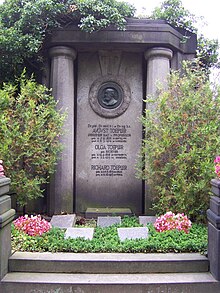Biography and Academic Career
– August Toepler was born on September 7, 1836.
– He studied chemistry at the Gewerbe-Institut Berlin from 1855 to 1858.
– Toepler graduated from the University of Jena in 1860.
– He became a lecturer of chemistry and physics at the Academy Poppelsdorf from 1859 to 1864.
– Toepler held the position of chair of chemistry and chemical technology at the Polytechnic Institute of Riga from 1864 to 1868.
– In 1868, Toepler became a professor at the University of Graz in Austria.
– Under his administration, a new physical institute was established at the University of Graz.
– Toepler moved to Dresden in 1876 and was offered the chair of Experimental Physics.
– He served as the director of the Physical Institute at the Dresden Technical University until his retirement in 1900.
– Toepler’s son, Maximilian Toepler, continued his scientific work independently.
Contributions and Discoveries
– Toepler applied Foucault’s knife-edge test for telescope mirrors to the analysis of fluid flow and shock waves.
– He developed schlieren photography, a new method for visualizing air flow, based on the knife-edge test.
– Toepler invented the Toepler machine, an electrostatic influence machine, in 1865.
– His machine was used in early medical x-ray machines.
– Toepler made significant contributions to the field of physics.
– He invented the Toepler Pump, a device used to create high vacuums.
– Toepler conducted experiments on shock waves and visualized them for the first time.
– He developed a method to measure the speed of sound in gases.
– Toepler’s work on electrical discharges laid the foundation for future research.
Electrostatic Machines
– Toepler described a symmetrical machine in 1866, which is similar to a voltage multiplier.
– Toepler’s electrostatic machines were made by different people and companies.
– The differences between a Toepler machine, a Holtz machine, and a Toepler-Holtz machine are unclear.
– Sometimes a machine made by Holtz is called a Holtz-Toepler machine, but the original design is the same as the Toepler machine.
– Toepler-Holtz electrostatic generators were commonly used for medical purposes and to power early x-ray devices.
Schlieren Technique
– Toepler’s research in gas discharge physics led to the development of the Schlieren technique.
– He used the streak method to make acoustic waves in the air visible.
– Toepler’s work with the Schlieren technique was important for high-speed cinematography.
– Motion pictures have been used to study phenomena that occur too fast for normal cameras.
– The Schlieren technique has been applied to solve various problems in the field of high-speed imaging.
Impact and Recognition
– Toepler’s work on shock waves gained him recognition in the scientific community.
– He was known for his innovative experiments and visualizations.
– Toepler’s inventions, such as the Toepler Pump, brought him fame.
– His research was published in reputable scientific journals.
– The Toepler Pump revolutionized vacuum technology.
– It allowed for the creation of higher vacuums than previously possible.
– Toepler’s advancements in vacuum technology paved the way for further discoveries.
– The Toepler Pump is still used in various scientific and industrial applications. Source: https://en.wikipedia.org/wiki/August_Toepler
This article needs additional citations for verification. (May 2019) |
August Joseph Ignaz Toepler (7 September 1836 – 6 March 1912) was a German chemist and physicist known for his experiments in electrostatics.
August Toepler | |
|---|---|
 August Toepler's grave at Johannisfriedhof | |
| Born | August Joseph Ignaz Toepler 7 September 1836 |
| Died | 6 March 1912 (aged 75) |
| Alma mater | University of Jena |
| Occupation | Physicist |
| Known for | Toepler pump Toepler–Holtz machine Schlieren photography |
| Scientific career | |
| Fields | Electrostatics |
| Institutions | Dresden University of Technology Riga Technical University University of Graz |


